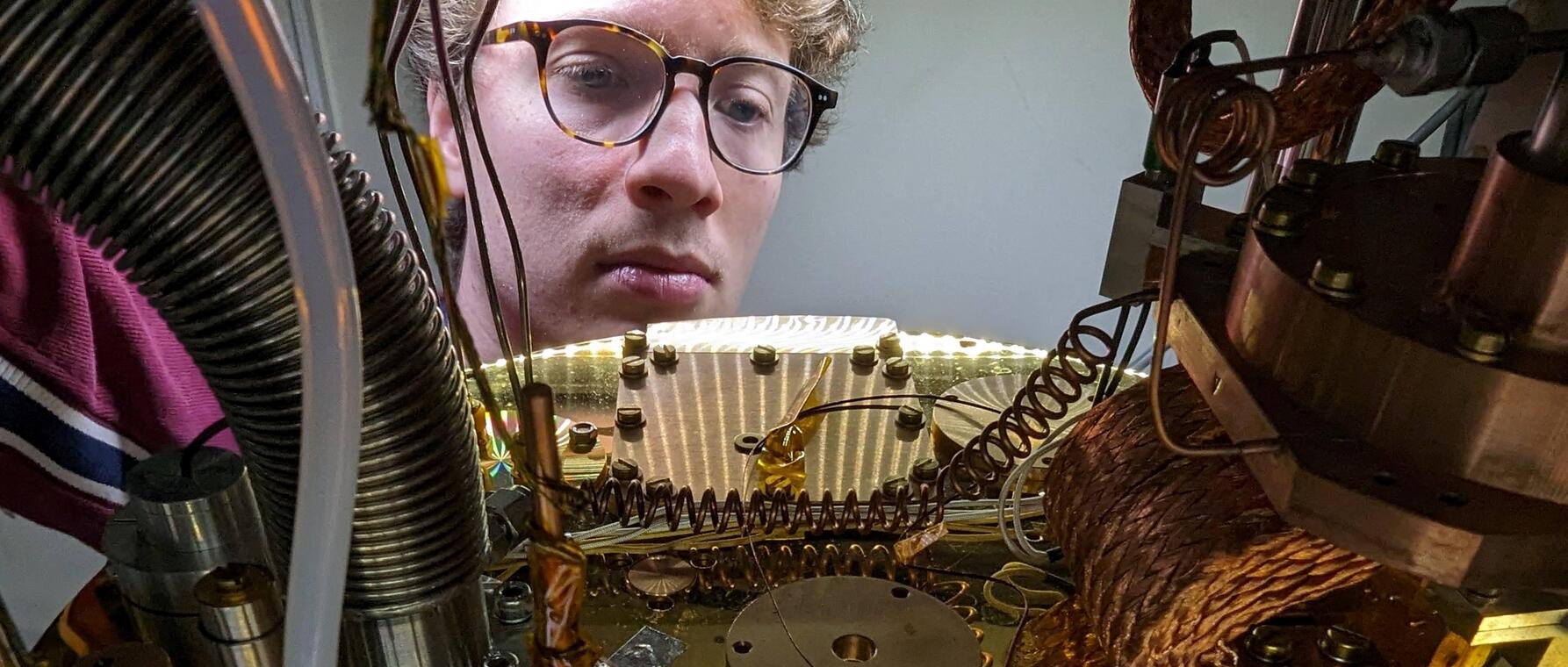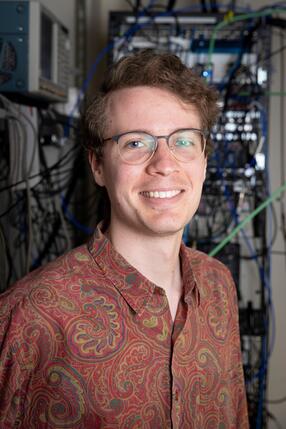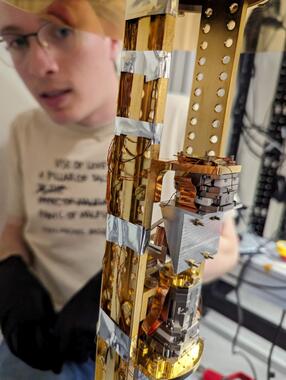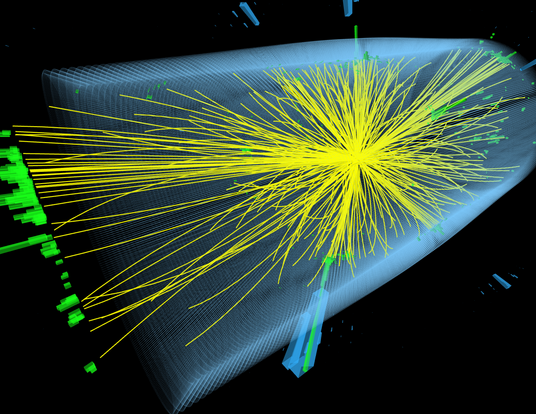Microscopic Manipulation
Pieter-Jan Stas, PhD student

Research at Risk: Since World War II, universities have worked with the federal government to create an innovation ecosystem that has yielded life-changing progress. Now much of that work may be halted as funding is withdrawn. Find out more about the threats to medical, engineering, and scientific research, as well as how Harvard is fighting to preserve this work—and the University's core values.
Pieter-Jan Stas is a physics PhD student working in the Quantum Optics Laboratory of Professor Mikhail Lukin. Stas discusses quantum networking, its practical application, and his academic journey from physics to engineering and back.
Quantum Entanglement
My research focuses on quantum networking—basically scaling up some of the interesting and useful properties of quantum physics.
The properties of physics are different at the microscopic, quantum level. One of those properties is entanglement—the way that two particles can be linked to each other even if they are not physically connected. In the Lukin Group, we are trying to engineer a system where particles can be entangled with each other over very large distances.

To do this, we use nanofabrication to make structures on tiny diamond chips. Because diamond conducts light well, it can guide and concentrate light into a very small volume. Within the diamond chips, we implant individual silicon atoms. Diamond is made of carbon atoms, and we replace two of those with a single silicon atom, which creates a silicon-vacancy center. In this center sits an electron that is very responsive to light. When we guide light through the structures and into the silicon-vacancy center, individual photons interact with the electron which stores information as a quantum bit or “qubit.”
Because the electron qubit interacts so strongly with light, the individual photons can access the information stored on the qubit. They become entangled. If you capture that individual entangled photon and send it to another lab that has its own diamond chip and electron qubit, you can create entanglement between the electron qubits in each lab.
When this entanglement is created, whatever changes are made to one qubit also affect the other qubit, no matter how far away they are from each other. Using entanglement, you can instantaneously manipulate particles at a large distance without any physical connection, which opens up some interesting applications like connecting quantum computers or amplifying weak long-distance light signals.
Research with Impact
I was always interested in physics. As a high school student in Geneva, I visited the Large Hadron Collider at the European Council for Nuclear Research (CERN). I found it fascinating! I loved the idea of figuring out and building things to understand how the universe works.

Funnily enough, after I worked at CERN for a summer, I got turned off a bit by physics. Working on such a large experiment among thousands of scientists made me feel disconnected. It was difficult for me to imagine how I could have an impact on the science at CERN. So, when I started college, I studied engineering at first because I thought it would allow me to work more directly with experiments. However, I had to take some classes in quantum mechanics. They immediately brought back my initial excitement about understanding the world and brought and I turned to physics again.
I then worked in the Safavi-Naeini Lab at Stanford. There, one or two people would lead, going back and forth between theory and practice, taking a simulation and immediately putting it to the test in fast turnaround experiments. I really liked working in this dynamic environment. That experience made it clear to me that these were the kind of quantum physics experiments I wanted to do.
I searched for labs where I could conduct my PhD research and was drawn to the Lukin Group at Harvard. It’s large, about fifty people, with subgroups that operate like labs in themselves. The one that caught my eye focused on quantum networking. I liked that it was trying to bring the quantum world closer to the “human-scale” one, with applications that could be practically useful. For example, in the future, quantum networking could revolutionize encryption by making encryption keys impossible to intercept. I guess that’s the attraction for me: I enjoy doing science that could have a concrete impact.
Banner photo by Erik Knall
Get the Latest Updates
Join Our Newsletter
Subscribe to Colloquy Podcast
Simplecast




